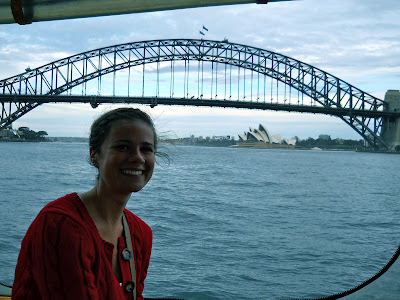"This time I did it by myself so I learned a lot about who I am and life," Sokolow explained. "I was forced to be out of my comfort zone, to try new things and meet new people. I was just really open."
The Encino, Calif. native signed up with a program called Israel 2.0 so that he could visit Jerusalem, Tel-Aviv, Safed [Tzfat], Tiberius, Eilat and a couple other small cities while on his 2-week venture.
"I did it with people who have already been on Birthright or some other Isreal trip. It [Israel 2.0] was subsidized, like it wasn’t as expensive because people give money so that others can keep visiting Israel," he said.
Sokolow explained that the program allowed for one week of site seeing and another week of informational sessions. A sample itinerary can be found here.
"The first week of the trip was touring and visiting a ton of places like museums and army bases. You see different attractions like the beach and stuff. You’re basically doing it all," he said. "The second week was all in Jerusalem. We spent almost all our time in a building in front of the Western Wall. There were guest speakers about topics that pertained to us. For example, we talked about representing Israel in the United States, and marrying someone that’s Jewish. There were a bunch of different talks that I at first was a little skeptical about. Then it ended up being one of the things I enjoyed most about the trip."
Sokolow explained that the group was what made the trip most enjoyable. The 35 college students spent almost waking hour of the day together. They became close friends as they traveled, toured and learned together. Just a few weeks ago, Sokolow said his travel group had a reunion weekend on the east coast.
When he's not reuniting with his fellow travel members, he has two items to remind him of all that he learned on his journey through Israel. The first is a silver necklace that is engraved in Hebrew that says, "Yesterday is history, tomorrow is a mystery and today is a gift."
"My sister actually went to Israel last May and she got an engraved ring," he said. "And even though there’s a book of nearly 1,000 things you could get engraved, when I got home I was talking to her and found out we got the same exact quote and I had no idea."
Not only is the piece of jewelry emblematic of his travels, but also of the close bond he has with his sister, Lexi.
The second item is a small Hebrew painting that translates to say, "Nothing is coincidence." He currently has the colorful painting hanging across from his bed in his room.
Sokolow said he'd be quick to encourage others to venture to countries to learn about themselves, other cultures and history.
"I learned personal, historical and cultural aspects. The food and the music, the daily interactions they’re all so different. Even the way that on Shabbat the whole city shuts down and nothing is open. It’s a really big deal in comparison to here, he said. "I’d done summer camp and Birthright and nothing compares to this trip I took on my own."
Sokolow has provided me with and given me permission to use the following photos and short captions to depict his trip.
Riding camels in the Negev Desert.
Covered in mud at the Dead Sea.
On top of the building where we had classes and lectures, outside of the Western Wall.
Saying a prayer in front of the Western Wall, wearing Tefillin on my arm and head.














